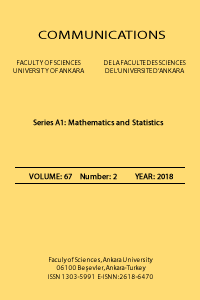Equitable edge coloring on tensor product of graphs
A graph G is edge colored if different colors are assigned to its edges or lines, in the order of neighboring edges are allotted with least diverse k-colors. If each of k-colors can be partitioned into color sets and differs by utmost one, then it is equitable. The minimum of k-colors required is known as equitably edge chromatic number and symbolized by $\chi^{\prime}_{=}(G)$. Further the impression of equitable edge coloring was first initiated by Hilton and de Werra in 1994. In this paper, we ascertain the equitable edge chromatic number of $P_m \otimes P_n$, $P_m \otimes C_n$ and $K_{1,m} \otimes K_{1,n}$.
Keywords:
Equitable edge coloring, , Tensor product,
___
- Bondy, J. A., Murty, U. S. R., Graph Theory with Applications, New York; The Macmillan Press Ltd., 1976.
- Harary, F., Graph Theory, Narosa Publishing home, 1969.
- Vizing, V.G., On an estimate of the chromatic class of a p-graph, Metody Diskret. Analiz, 5 (1964), 25--30.
- Meyer, W., Equitable Coloring, Amer. Math. Monthly, 80 (1973), 920--922.
- Hilton, A.J.W., de Werra, D., A sufficient condition for equitable edge-colorings of simple graphs, Discrete Mathematics, 128 (1994), 179-201.
- Weichsel, P.M., The Kronecker product of graphs, Proc. Amer. Math. Soc., 8 (1962), 47-52.
- Li, J.W., Zhang, Z.F., Chen, X.E., Sun, Y.R., A note on adjacent strong edge coloring of K(n,m), Acta Mathematicae Application Sinica, 22(2) (2006), 273-276.
- Veninstine Vivik.J and Girija.G, Equitable edge chromatic number of mycielskian of graphs, Far East Journal of Mathematics,101(9) (2017), 1887-1895.
- ISSN: 1303-5991
- Yayın Aralığı: Yılda 4 Sayı
- Başlangıç: 1948
- Yayıncı: Ankara Üniversitesi
